The climate and the soils creates such balance between ripeness of fruit and acidity of the wines that are unique in South America
Joaquin Hidalgo, South American Editor at Vinous
Tucked between Argentina and Brazil, Uruguay, is a pie-shaped (see below) nation that defies expectations. With a population of just 3.4 million—less than Brooklyn and Manhattan combined—this small but mighty country boasts a highly educated workforce, a stable democracy, and one of the most progressive social and political landscapes in South America.
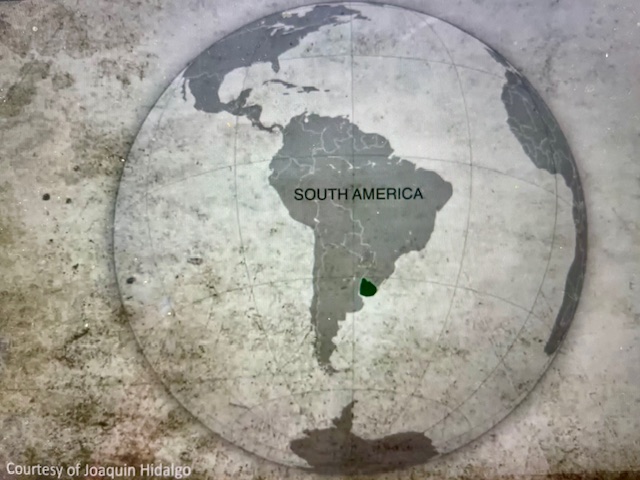
Uruguay’s heritage is deeply European, shaped primarily by Spanish and Italian immigrants who brought with them a love for food, wine, and a strong agricultural tradition. Today, the country enjoys a relatively equitable distribution of wealth, world-class infrastructure, and institutions that make it one of the most developed nations in the region.
But Uruguay isn’t just known for its progressive politics—it has a big appetite, literally. With four head of cattle per citizen, beef is king, fueling a national culture of asados (grilled feasts) where great food and great wine go hand in hand. While Tannat, the country’s signature red grape, dominates the vineyards, along the coast, where seafood reigns, crisp, Atlantic-influenced white wines take center stage.
Unique Terroir
Uruguay’s wines are shaped by the sea.
At the heart of this influence is the dramatic meeting of two ocean currents—the cold Malvinas Current flowing up from the south and the warm Brazil Current drifting down from the north. Where they collide, they create cooling Atlantic breezes that moderate temperatures, soften summer heat, and reduce the risk of frost in cooler months.
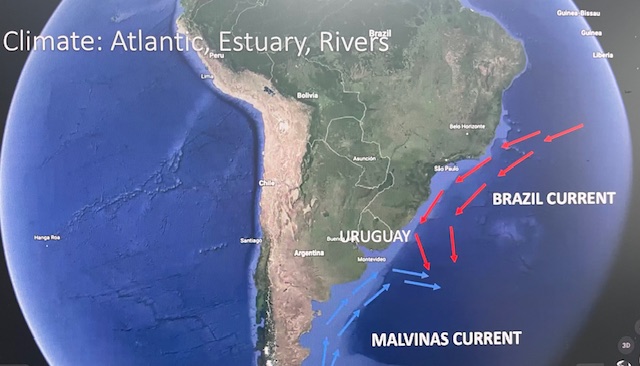
But the ocean’s influence doesn’t stop there. These winds act as natural guardians of the vineyards, drying vines after rainfall and keeping disease pressure in check. They also intensify the diurnal temperature shifts crucial to wine balance—sun-drenched days build ripeness, while crisp, cool nights preserve acidity. The result? Wines—especially whites—that are vibrant, fresh, and often kissed with a distinctive saline edge, a true reflection of their Atlantic roots.
Uruguay Wine at a Glance
Uruguay may be one of the smallest wine-producing nations in South America, but it punches well above its weight in quality and character.
- Approximately 15,000 acres (~6,000 ha) under vine, with over 180 family-owned wineries.
- Six distinct wine regions—Northern Shore, Southern Shore, Metropolitan, Oceanic, Center, and North—but nearly 90% of production is concentrated in Canelones, San José, and Montevideo.
- Fourth-largest wine producer in South America, sharing a latitude with Mendoza, Argentina, and Santiago, Chile.
- Calcareous clay soils and a maritime climate draw comparisons to Bordeaux, with ocean breezes and estuarine influences shaping its wines.
- Tannat reigns as the flagship red grape, but Merlot, Cabernet Franc, and Albariño also thrive.
- Albariño has already surpassed Chardonnay in plantings and is on track to overtake Sauvignon Blanc as Uruguay’s second most planted white grape—trailing only Ugni Blanc, used primarily for brandy and Cognac.
Tasting Uruguay’s Coastal Whites
Disclosure: Wines were provided as a media samples. No other compensation was received. All opinions are mine.
2023 Los Cerros de San Juan Riesling Familie Lahusen Single Vineyard
In 1854, the Lahusen family from Germany founded what is now the oldest winery in Uruguay. Their heritage led them to import riesling vines 80 years ago to farm in Colonia, close to the Rio de la Plata
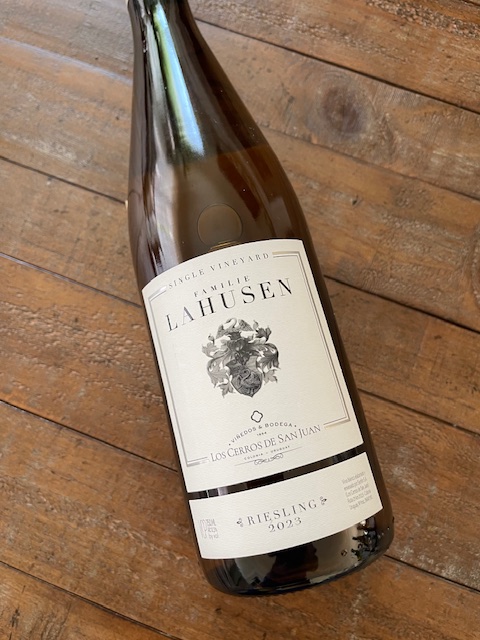
Pale straw with gold reflection inviting pear, white peach, lime zest, flint, spice, honeysuckle and subtle acacia aromas. On the palate, it light-bodied and very fresh with green apple, pear, lime, spice, honey and a kiss of white peach flavors with an appealing thread of salinity. SRP – $25. (89 pts.)
2023 Viña Progreso Viognier
Gabriel Pisano, who has made wine in Sonoma, Apalta, Priorat and South Africa, makes the wine at his family’s Bodega Pisano in Progreso; he bottles his own experimental wine projects under the Viña Progreso label.
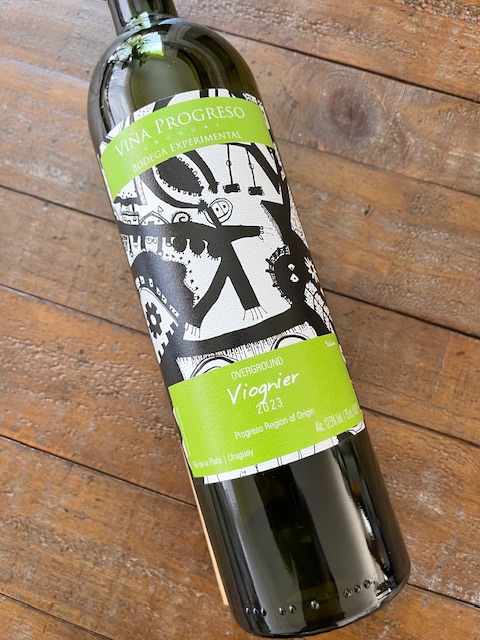
Pale straw color with white peach, nectarine, passion fruit, and mandarin orange zest aromas. On the palate it’s medium-bodied with bright acidity and flavors that echo its aromas. This is a distinctive Viognier unlike any other I’ve had..that’s a good thing! SRP – $26 (89 pts.)
2024 Familia Traversa Sauvignon Blanc
After Ugni Blanc, Sauvignon Blanc is the second most widely planted white variety in Uruguay, presented by the Traversa family from stainless-steel vats in their modern Montevideo winery
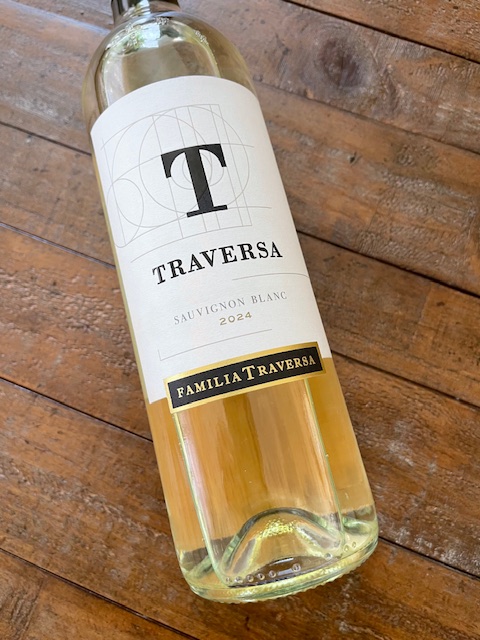
Pale straw color with lemongrass, lemon zest, melon and grapefruit aromas. On the the palate, it’s light-bodied with bright zesty acidity. and lemongrass, melon,pink grapefruit and melon flavors. Medium finish. 12.5% abv| SRP – $16 (88 pts.)
2024 Bodega Bouza Albariño
Hailing from Galicia, the Bouza family were the first to plant Albariño in Uruguay, a variety that has now eclipsed Chardonnay to become the second most widely planted white wine grape.
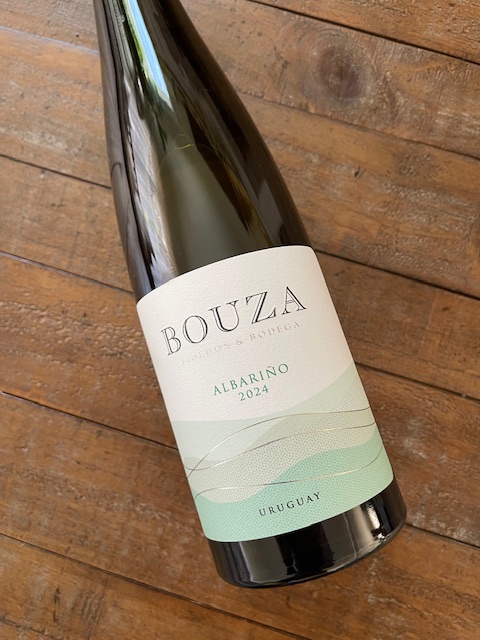
Pale yellow with green reflections and alluring white peach, nectarine, guava lemon zest and spice aromas. On the palate, it’s medium-bodied with zesty mouth-watering acidity and flavors that echo its aromas. Medium plus finish. SRP -$28 (90 pts.)
2024 Familia Deicas Albariño Atlántico Sur
Santiago Deicas grows Albariño at his estate vineyards in Canelones and Maldonado, and finds that he prefers the “explosive flavor” of the grape in the clay and calcareous soils of Juanicó, in Canelones.
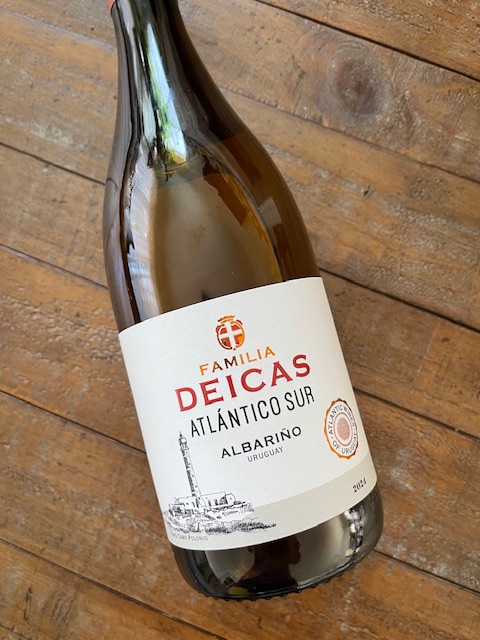
Pale straw with green reflections with white peach, melon, grapefruit zest, ocean spray, and honeysuckle aromas. On the palate, it’s light-bodied and very fresh with white ripe peach, green melon, grapefruit, Meyer lemon zest flavors accented with an appealing saline minerality. Medium finish. Outstanding value! SRP – $20. (89 pts.)
2023 Bodega Garzón Albariño Single Vineyard
Antonio Antonini considered the granitic soils of Garzón and the rainy Atlantic climate when he suggested the team at Bodega Garzón plant albariño—and they now produce three in each vintage, including this single vineyard wine
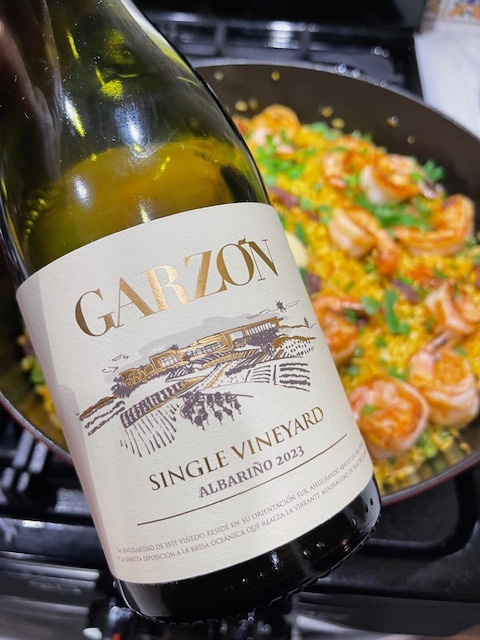
Pale gold with enticing white peach, dried apricot, lemon zest, honeydew, spice, orange blossom and sea spray aromas. On the palate, it’s medium-bodied and very fresh with flavors that echo it’s aromas, though the spice is more pronounced and there is a very appealing thread of salinity. Medium-long finish. 14% abv|SRP – $35 (91 pts.)
Final Thoughts
Uruguay’s winemaking story is one of resilience, innovation, and deep respect for both tradition and terroir. Though small in scale, its vineyards produce wines of remarkable character, shaped by the ever-present influence of the Atlantic. From the bold reds of the inland valleys to the crisp, saline-kissed whites of the coast, Uruguay offers a compelling alternative to more familiar South American wine regions.
For those willing to venture beyond the well-trodden paths of Malbec and Carmenère, Uruguay’s coastal white wines are well worth seeking out. They deliver quality, freshness, and a sense of place—often at exceptional value. Whether it’s a vibrant Riesling, a distinctive Viognier, or an Albariño that rivals its Galician counterparts, these wines tell a story of ocean breezes, sun-drenched vineyards, and a nation quietly redefining its place in the world of wine.
You might also enjoy: